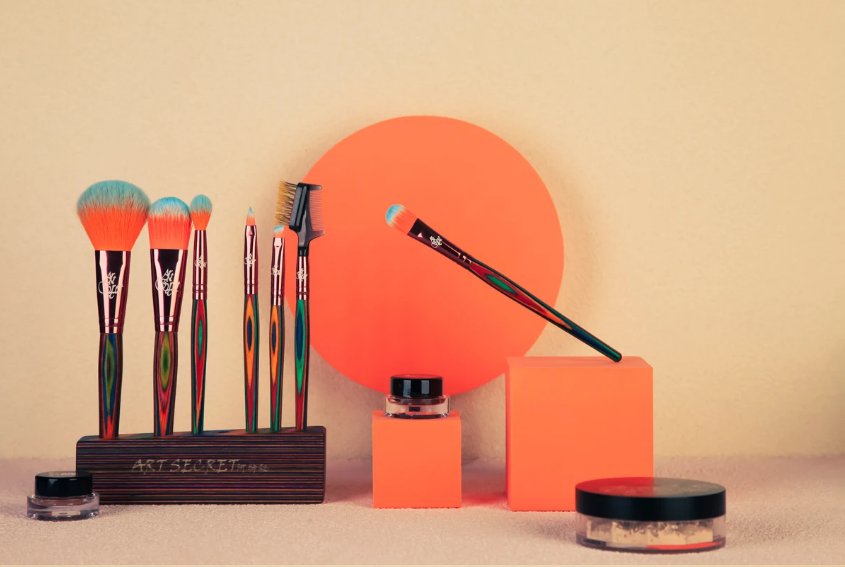With the development of the market economy and the improvement of people’s living standards, fragrance printing has been widely used in prints that integrate visual and olfactory effects, such as magazines, advertisements, postcards, greeting cards, calendars, cosmetics, and food packaging. In fact, if children's books are printed with scented inks, the visual and olfactory feelings can be organically combined to improve children's reading interest. The liquid crystal ink is added to the fragrance printing, and the printed flower pattern will show different colors with the changes of the season. Touching by hand will release the fragrance of various flowers, which is the charm of the fragrance printing.
The aroma printing ink contains a relatively large number of aroma capsules, and cannot withstand excessive printing pressure. Therefore, the aroma print is mainly based on a screen printing process, and occasionally gravure printing and flexographic printing are used.
The composition and principle of fragrance inks are as follows:
The ink used for fragrance printing is composed of fragrance capsules, adhesives, pigments, and other additives. The fragrance capsule is based on the principle of emulsification, and the fragrance core material as the oil phase is dispersed in the aqueous phase of a hydrophilic natural or synthetic polymer resin, such as an aqueous solution of gelatin, gum arabic, polyvinyl alcohol, and the like. After stirring, the entire system is dispersed, the temperature is changed, and the pH is changed, or salt and formaldehyde, alum, and other second polymers are added, and a polymerization reaction occurs at the interface between the aqueous phase and the oil phase, and the shell material is precipitated and dispersed. It adsorbs around the droplets of perfume droplets to form a shell, that is, a polymer film that surrounds the surface of the oil droplets. Usually, this membrane is called a wall material of a fragrance capsule. The perfume is coated in a film and gel-cured to form a capsule, finally obtaining a microcapsule containing a perfume. The diameter of the flavor particle capsule is 10 to 30 μm, and the wall thickness is about 1 μm.
When the surface of the scented print is gently rubbed, the capsule in the ink is broken, and the perfume enclosed in the capsule is scattered and temporarily floats in the air to generate a fragrance. Due to the protection of the capsule, this fragrance can be stored for a long time. As long as the capsule is not broken, the fragrance can remain for years. In addition, it is worth noting that since the scented microcapsules are very tiny, a diameter of 10 to 30 μm ensures that the amount of contact and inhalation during hand rubbing is minimal, and does not cause irritation to the skin and respiratory tract.
So how to choose the aroma printing ink?
The premise of printing with a fragrance printing ink is that the printed image must be heavier in color and the printed image area should be as large as possible so that the surface of the paper can be printed with microcapsules sufficient to exert a fragrance effect. Because the aroma concentration of the scented print depends on how many scented microcapsules are printed on the print.
One of the prerequisites for aroma printing is that ink suppliers must provide a range of additional services. First, the ink supplier must have extensive practical experience in the printing process and be able to designate a supplier of flavor olein that is responsible for the microencapsulation of the flavor olein and mix the microcapsules into the printing ink, polish, or dispersion coating; Second, it also requires the ink supplier to understand and be responsible for adjusting the ink viscosity to suit the printing system used. In addition, after completing the above work, proofing must also be performed on the printing press.
In fact, not every flavor and every fragrance is suitable for making microcapsules. For example, the scent of leather, chocolate or coffee is a difficult-to-replicate fragrance. Suppliers of scented inks must perform flavor microencapsulation tests during the design phase of scent printing. In addition to performing preliminary tests on the printing presses used exclusively for testing, the aroma printing must also be carried out on the spot in the printing machine that will be subjected to the aroma printing. Otherwise, once the actual printing production is started, if the printing effect does not meet the expected requirements, it will Cause major losses.
The taste of the paper printing ink itself affects the scent printing effect. Therefore, in the case of aroma printing, inks with a small taste should be selected and tested on paper and ink. In addition, additives in printing inks may change the expected scent of the prints due to volatilization, so care must be taken when performing scent printing.
Stippling Brush is one type of Markup brushes. Right now it is Prevaiing in the market. Stippling brushes have two layers hair. The top layer picks up the makeup product you`re going to apply, and the bottom layer is denser, helping to push the product onto your skin rather than having your bristles absorb the formula. Often, the two layers will come in different colors.
SAMINA FORAM(SHENZHEN) CO.LTDwas established in 1976 and in 1991, we moved from Korea to Shenzhen, China. At that time, our company had about 200 technicians who were our most valuable assets. For us, each employee is an important part of our road to success, and their skills and experience are critical to the development of our company. Our business philosophy is to inspect all products 100%. This means that we carry out meticulous quality checks on each and every product to ensure that the quality of the product meets the needs and expectations of our customers. We are convinced that only through our unremitting efforts and strict quality standards can we gain a competitive edge in the market and win the trust of our customers.

Stippling Brush
SAMINA FORAM (SHENZHEN) CO., LIMITED. , https://www.saminamakeuptools.com